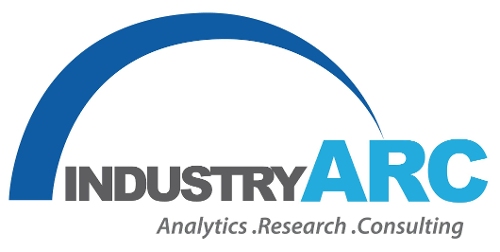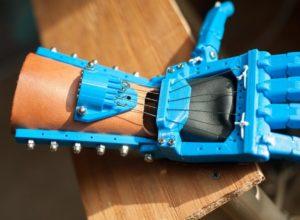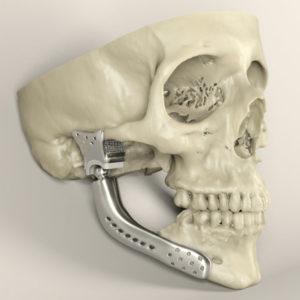One of the faster growing markets to adopt 3D printing technology is the healthcare industry, which has been rapidly developing new medical applications at an astounding rate. What once was just a small blip on the 3D printing radar has grown into its own industry within an industry, and looks to continue to expand exponentially over the next four years. We’ve already seen some amazing developments over the last few years in bioprinting, prosthesis manufacturing and customized medical implants. While most of these advances have been comparatively small slices of the total industry pie, now that they are starting to mature and find wider adoption across the market, that slice of pie is expected to grow by leaps and bounds.
 A new market research report released by IndustryARC breaks down the medical 3D printing industry into several categories and subcategories, including technologies typically used like fused deposition modelling (FDM), laser beam melting (LBM), electron beam melting (EBM) and Stereolithography (SLA). There is also an entire section dedicated to materials used in the healthcare industry, including metals, resins and biological materials like cells. The figures have also been broken down by geography and applications, like medical implants and tissue bioprinting.
A new market research report released by IndustryARC breaks down the medical 3D printing industry into several categories and subcategories, including technologies typically used like fused deposition modelling (FDM), laser beam melting (LBM), electron beam melting (EBM) and Stereolithography (SLA). There is also an entire section dedicated to materials used in the healthcare industry, including metals, resins and biological materials like cells. The figures have also been broken down by geography and applications, like medical implants and tissue bioprinting.
As of 2014 the global 3D printing healthcare market recorded revenues of $487 million and IndustryARC expects it to grow by 18.3% annually until the year 2020. That rapid expansion is primarily being driven by the industry increasing the amount of 3D printing technologies being adapted for medical use, and is spread out among several applications. The healthcare industry has seen significant growth in areas as diverse as dental applications, medical implants and drug manufacturing, with materials used in these applications varying widely. Dental implants mostly use metal materials and ceramics to 3D print dental crowns, while the medical research industry has its own variety of advanced biomaterials.
In 2014, medical 3D printing materials in healthcare alone had revenues of $284.7 million, and are actually estimated to grow at a faster compound annual growth rate than the rest of the industry. Medical and dental 3D printing materials are predicted to grow at a rate of 19.1% until 2020. Commonly used 3D printing materials for healthcare applications include plastics, metals, ceramics, donor cells, bone cement and various biomaterials. Metal powders and biomaterials are still extremely expensive, but technology improvements are reducing the costs associated with metal, and biomaterials are still in the research stage. They are expected to drop in price as they become a more prominent material used in the healthcare industry.
One of the driving forces of growth for the medical 3D printing industry is the growing demand for patient-specific products in orthopedics and maxillofacial surgery. Additionally, advances in tissue engineering for 3D bioprinting are ongoing. IndustryARC expects that tissues generated by bioprinting will soon be available as transplantable organs and tissue in the near future. The reduction in 3D printing technology costs are also being predicted based on the growing demand for government subsidy programs and medical bioprinting research grants.
Currently North America is the leading consumer of 3D printing technology in the healthcare industry and accounts for 39.7% of the entire market share in 2014. Europe is the second major market for medical 3D printing applications, followed by the Asia-Pacific (APAC) market, both together accounting for 37% of the market in 2014. While the market in APAC is considerably smaller than in North America, as with other 3D printing market segments the Asia-Pacific market is growing at a faster rate that in Europe or the Americas.
The major companies contributing to the growth of healthcare and medical 3D printing applications include 3D Systems, Stratasys, EnvisionTEC, Invetech, Digilab, MicroFab Technologies, nScrypt and Tevido BioDevices. You can download the entire IndustryARC market research report directly from Reportbuyer.com. Discuss further in the Expanding 3D Printing Healthcare Market forum over at 3DPB.com.
Subscribe to Our Email Newsletter
Stay up-to-date on all the latest news from the 3D printing industry and receive information and offers from third party vendors.
Print Services
Upload your 3D Models and get them printed quickly and efficiently.
You May Also Like
Making 3D Printing Personal: How Faraz Faruqi Is Rethinking Digital Design at MIT CSAIL
What if your 3D printer could think more like an intelligent assistant, able to reason through a design idea, ask questions, and deliver something that works exactly the way the...
Reinventing Reindustrialization: Why NAVWAR Project Manager Spencer Koroly Invented a Made-in-America 3D Printer
It has become virtually impossible to regularly follow additive manufacturing (AM) industry news and not stumble across the term “defense industrial base” (DIB), a concept encompassing all the many diverse...
Heating Up: 3D Systems’ Scott Green Discusses 3D Printing’s Potential in the Data Center Industry
The relentless rise of NVIDIA, the steadily increasing pledges of major private and public investments in national infrastructure projects around the world, and the general cultural obsession with AI have...
Formlabs Teams Up with DMG MORI in Japan
In late June, Nick Graham, Chief Revenue Officer at Formlabs, announced on LinkedIn that the company had partnered with DMG MORI, one of the world’s leading machine tool companies, to...





































